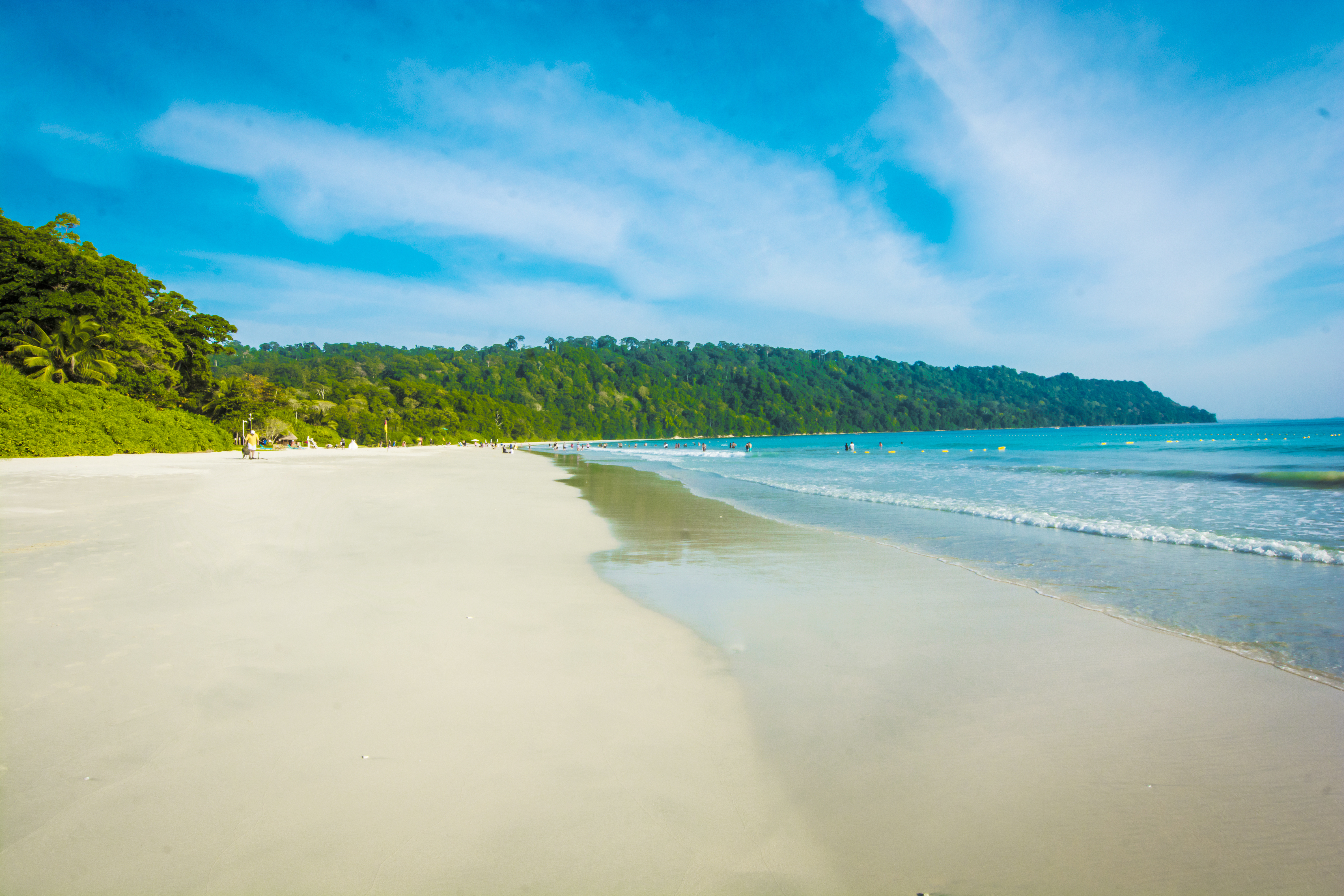Fri 22-08-2025 09:38
Tue 12-08-2025 09:38
Radhanagar Beach
Asia’s Crown Jewel
Beach Overview
Radhanagar Beach, located on Havelock Island (Swaraj Dweep) in the South Andaman district, is one of the most famous beaches in the Andaman & Nicobar Islands. Awarded as the Best Beach in Asia by TIME Magazine (2004), it is celebrated for its powdery white sands, turquoise waters, and breathtaking sunsets.
Did You Know?
Located on Swaraj Dweep, it is one of the most famous beaches in Asia, often listed among the top 10 beaches in the world. It’s known for its white sand, turquoise blue waters, and lush green surroundings. It is a prime attraction for tourists visiting th

How to Reach
Transportation Options
- By ferry from Port Blair to Havelock Island (1.5 to 2.5 hours), then by road to the beach.
- By ferry from Neil Island (approx. 1 hour).
Beach Activities
Located on Swaraj Dweep, it is one of the most famous beaches in Asia, often listed among the top 10 beaches in the world. It’s known for its white sand, turquoise blue waters, and lush green surroundings. It is a prime attraction for tourists visiting th
Sunset viewing and beach photography.
Leisure beach walks on the long shoreline.
Picnicking under shaded forest areas.
Scuba diving & snorkeling spots are available nearby (not directly on the beach).
Beach Highlights
White Sand & Crystal Waters – Perfect for swimming and relaxation.
Stunning Sunsets – One of the best sunset points in the Andamans.
Surrounded by Forests – A natural setting with lush greenery.
Calm & Wide Stretch – Ideal for long beach walks and photography.
Beach Location
Interactive Map
Radhanagar Beach
https://maps.app.goo.gl/vHd9kXbJ3CrLLAWSA
Best Time to Visit
- October to May – Calm seas and pleasant weather for beach activities.
- Avoid monsoons (June–Septembe
Photo Gallery

Do's ✅
- Find out about safe swimming/diving areas from Tourist Info Center, Local Tour Operators or Forest Dept. Staff. Avoid Protected Areas.
- Look for safety sign boards to identify potential dangers.
- Ask a lifeguard about swimming conditions like currents, tides, visibility, and presence of marine creatures.
- Swim with a friend; supervise children; avoid swimming in the dark.
- Raise your hand for help if in trouble, stay calm and signal for assistance.
Don't ❌
- Do not dangle arms or legs from boats.
- Avoid swimming under influence of alcohol or drugs.
- Remove shiny jewellery or bright colored clothes to avoid attracting predatory fishes.
- Avoid swimming with open wounds.
- Do not swim or dive among schools of fish; avoid night swimming/diving.
Look out for Harmful Marine Animals ⚠️
- Jelly Fishes: Sting may cause pain and giddiness. Apply vinegar or ice pack if stung. Don't rub.
- Sharks: Present in open sea & coral reefs. Avoid swimming alone or with open wounds.
- Sea Snakes: Poisonous; recognized by paddle-like tail. Stay away from them.
- Stone Fish: Venomous dorsal spines. Wear sturdy sandals, avoid stepping on corals or rocks.
- Salt Water Crocodiles: Found in creeks, mangroves, and sheltered waters. Get ashore if spotted and alert authorities.